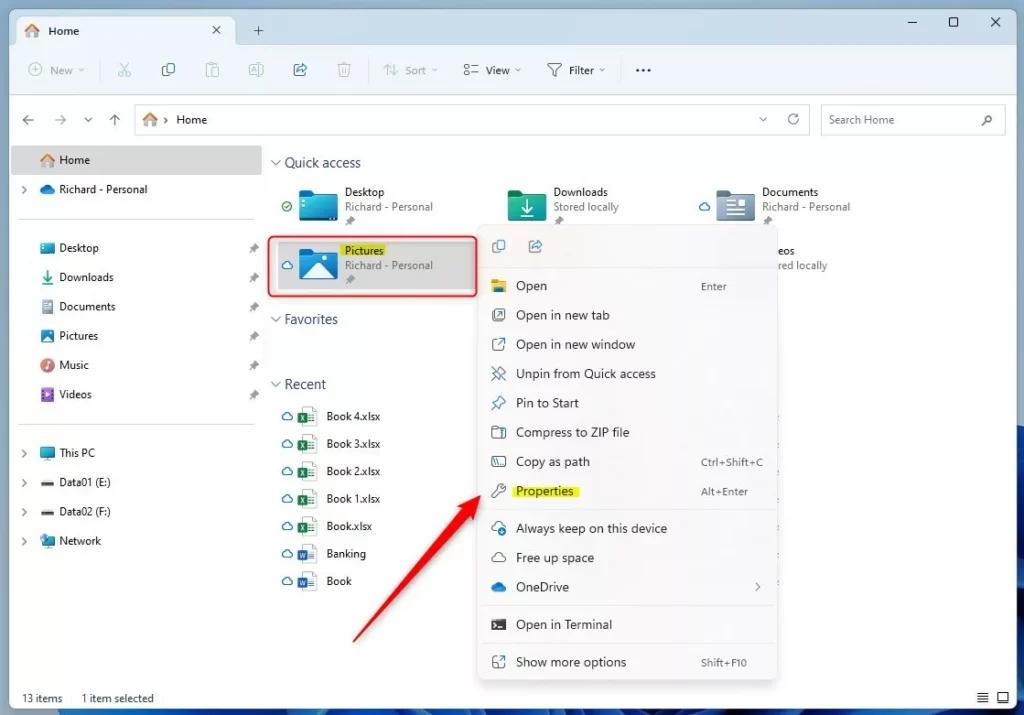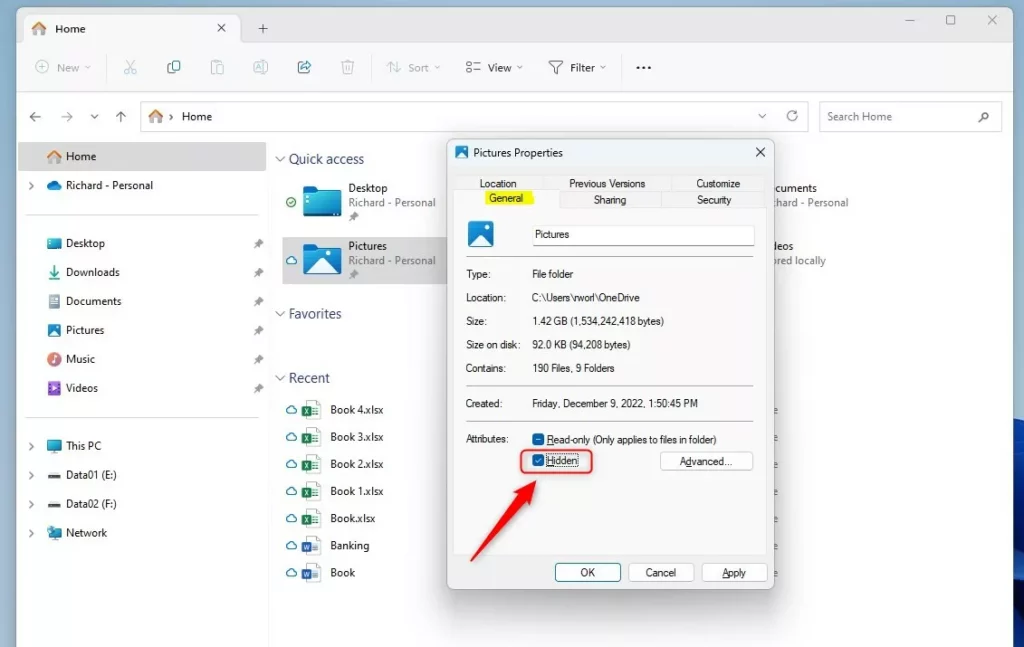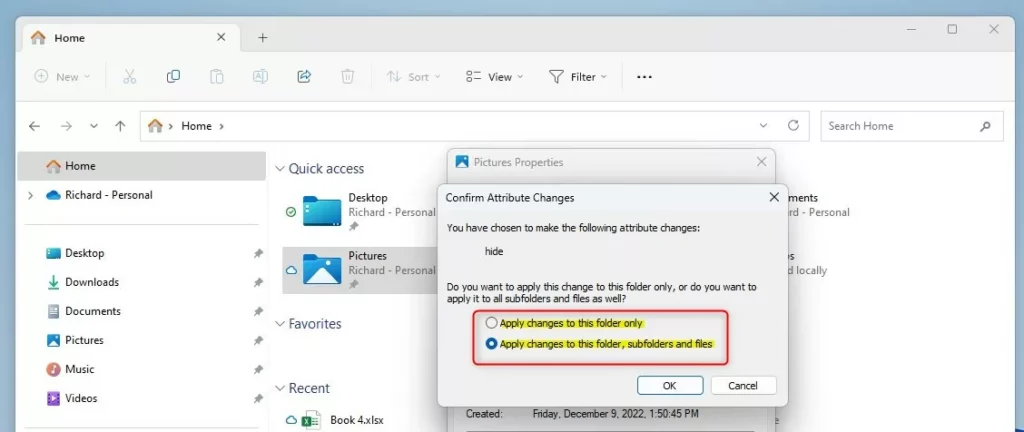This article describes steps to hide or unhide files and folders easily when using Windows 11.
Windows lets you hide files and folders using the hidden attribute. Removing the hidden attribute will unhide the files and folders. By default, protected operating system files are marked with hidden and system attributes.
When you hide a file or folder, its icon is dimmed (faded) in File Explorer, indicating it’s hidden. You unhide files and folders by removing the hidden attribute, showing a standard file and folder icon.
Below is how to hide or unhide files and folders in Windows 11.
Hide and unhide documents in Windows 11
As described above, Windows lets you hide files and folders using a hidden attribute. However, when files and folders are hidden, they are not readily visible in the standard File Explorer view.
There are multiple ways to hide or unhide files and folders in Windows. Below are a few of them.
Hide or unhide files and folders using the file or folder properties window.
To use the file or folder properties window, right-click on the folder you want to hide its content. Then, select the Properties command on the context menu.
You can also use the keyboard shortcut (Alt + Enter) to open the Properties window.

In this case, we want to hide the Pictures folder.
On the Properties window, under the General tab, check the next to Hidden in the Attributes section to hide the folder and its content. Finally, click the OK button to apply.
To unhide the folder and its content, right-click the item, then select Properties (Alt + Enter). Uncheck the box next to Hidden in the Attributes section to unhide.

When you click OK, choose one of the following options:
- Apply changes to this folder only
- Apply changes to this folder, subfolders, and files

Then click OK to apply.
Hide or unhide files and folders using commands
Alternatively, you can hide or unhide files and folders using the Command Prompt or the Windows PowerShell app.
To do that, open the Windows Terminal app. Then select either Command Prompt or PowerShell tab to use.
Use the command format below to hide folders and their content.
attrib +h "full path of folder"
Unhide folders and their content
attrib -s -h "full path of folder"
To hide or unhide a single file, you will specify the full path of the file, including the file extension.
attrib +h "C:\Users\<username>\Documents\file.txt" attrib -s -h "C:\Users\<username>\Documents\file.txt"
Examples:
Hide folders, subfolders, and files.
attrib +h "full path of folder" | attrib +h "full path of folder\*" /s /d
Unhide folders, subfolders, and files
attrib -s -h "full path of folder" | attrib -s -h "full path of folder\*" /s /d
You will run the commands below to hide the Pictures folder demonstrated above.
attrib +h "C:\Users\<username>\Pictures\" | attrib +h "C:\Users\<username>\Pictures\*" /s /d
Replace <username> with your Windows account profile name.
To unhide, run the commands below.
attrib -s -h "C:\Users\<username>\Pictures\" | attrib -s -h "C:\Users\<username>\Pictures\*" /s /d
That should do it!
Conclusion:
- Windows 11 provides multiple methods to hide or unhide files and folders, offering flexibility to users.
- Users can easily hide or unhide files and folders using the file or folder properties window and commands in Command Prompt or Windows PowerShell.
- Understanding these methods empowers users to manage the visibility of their files and folders according to their needs and preferences on the Windows 11 operating system.

Leave a Reply